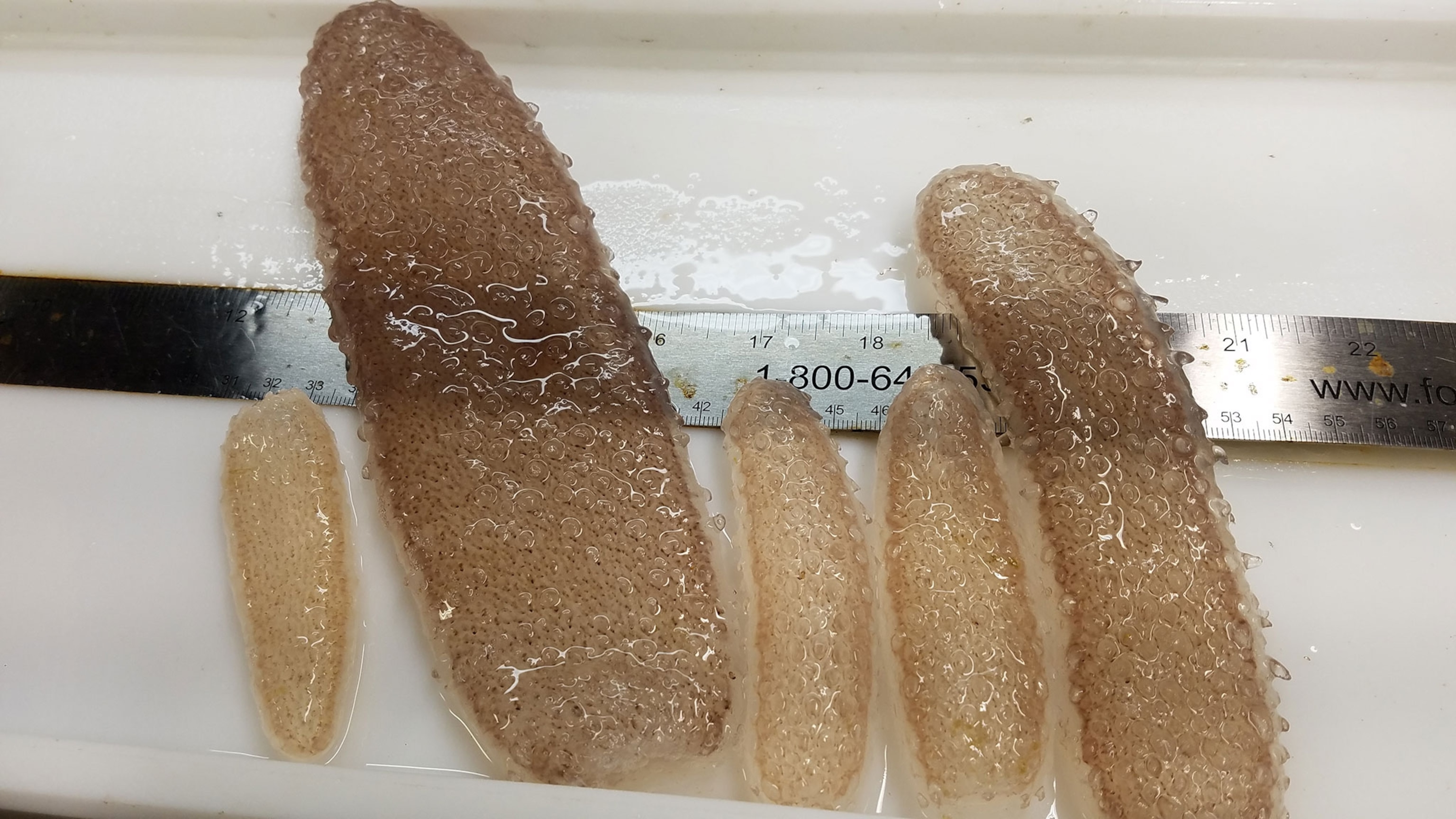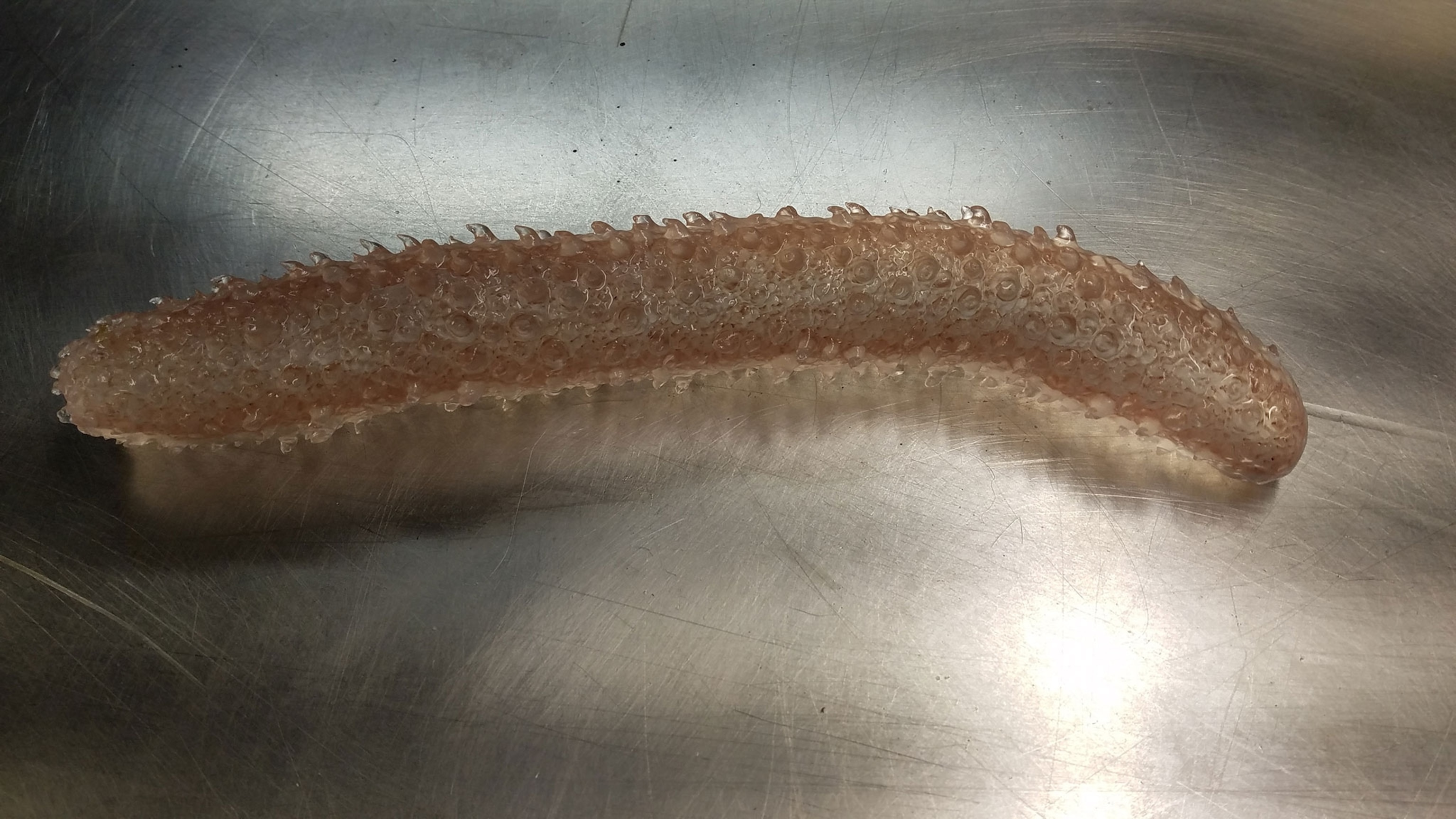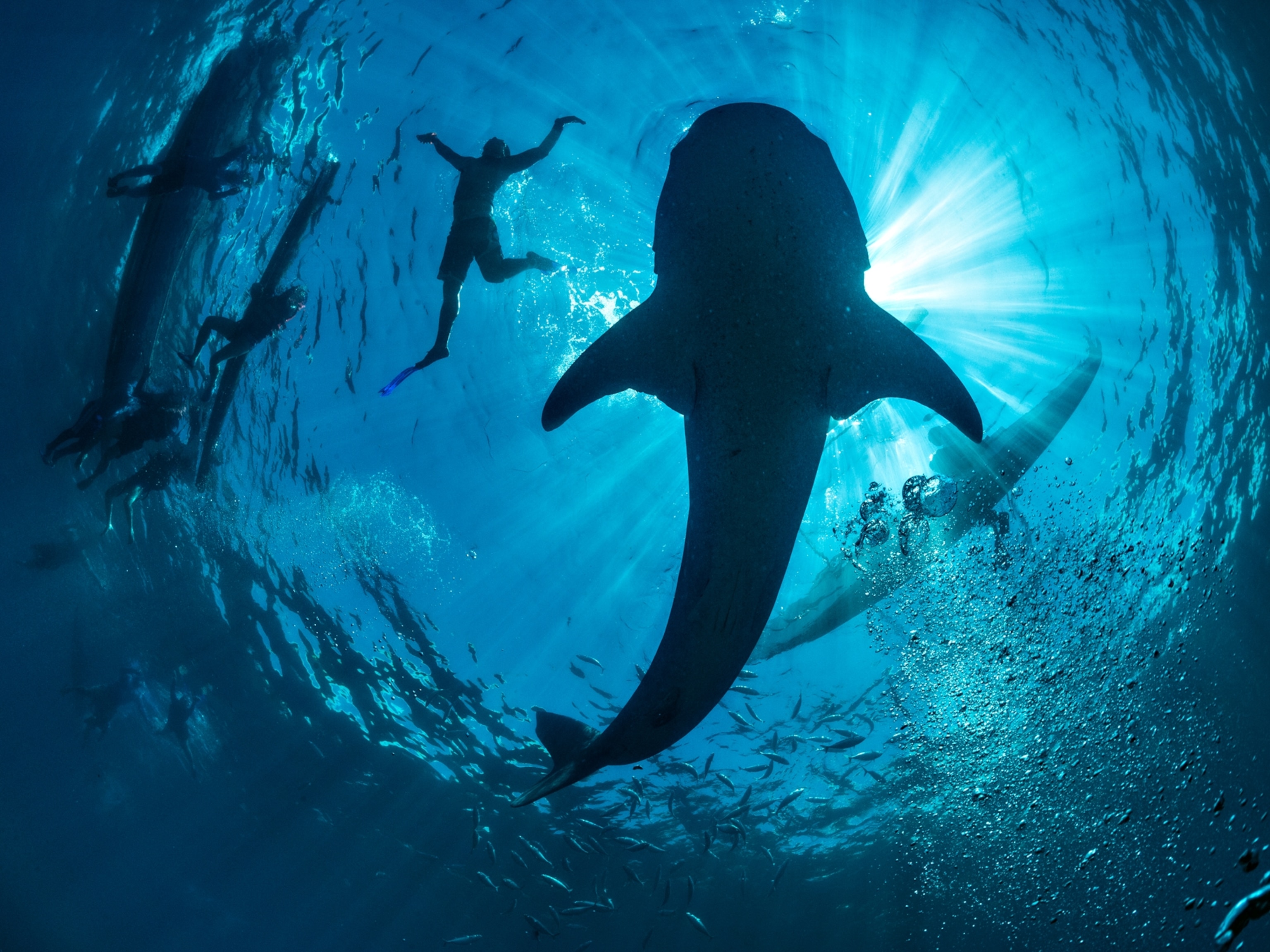





Bizarre, Glowing Sea Creatures Bloom in the Pacific
Tropical, tube-shaped animals called pyrosomes, known as "fire bodies," appear by the millions off the Pacific Northwest and Alaska. No one knows why.
After three years of unprecedented warm water along the U.S. West Coast, sea temperatures in 2017 had finally cooled. Fat shrimplike krill had returned and again were providing rich meals for salmon. Sea lions and other marine mammals were no longer washing ashore shriveled and starving. Things appeared to be getting back to normal.
Then they showed up.
Beginning this spring, millions of bizarre primitive-seeming jellyfish-like bioluminescent sea creatures—some more than two feet long—started gumming up research nets, glomming onto fishing hooks, and cascading onto beaches along the West Coast. These stubbly gelatinous animals called pyrosomes (each is technically a colony of other multi-celled animals called zooids) are cone-shaped tunicates normally found in the tropics, but they are spotted once in a while as far north as British Columbia. But this spring they started swarming the eastern Pacific in masses never before recorded, stretching from Oregon to the Gulf of Alaska.
"It's really weird," says Jennifer Fisher, a faculty research assistant with Oregon State University's Hatfield Marine Science Center. "I've never seen anything like it."
Neither has Rick Brodeur, a research biologist at the National Oceanic and Atmospheric Administration's Northwest Fisheries Science Center in Oregon. And he's been studying jellies and other gelatinous creatures in the Pacific Northwest for 30 years.
"It's just unbelievable how many of them there are," Brodeur says.
One research net pulled up 60,000 in five minutes. Salmon fishermen near Sitka, Alaska, gave up fishing because they couldn't keep the strange tubular beasts off their hooks. They dominated the water column for several hundred feet. But no one knows how or why.
"They got here and have been flourishing—just super abundant," Fisher says. "But that's the weird thing: Why here? Why now?"
A Little-Known Creature
Normally pyrosomes are so rare that a Canadian scientist who puts together an annual "state of the ocean" report had never even heard of them. West Coast scientists could find scant information about them in the scientific literature. It's also not clear whether there will be significant ecological implications, though most scientists suspect there would have to be. It's just impossible to predict what those effects might be.
Pyrosomes, meaning "fire bodies," are typically found in places such as the Ivory Coast or the Mediterranean Sea or waters off Australia and Florida. Some can reach 30 feet or more in length and resemble ghostly Tibetan long horns. Smaller ones use cilia, little hairs, to move up and down in the water column. They are firm, like cucumbers, and covered with tiny bumps, but ooze a gelatinous pus when handled.
In 2014 and 2015, when a warm water blob temporarily transformed the eastern Pacific, animals of all stripes appeared where they didn't belong. Warm-water sharks and tunas were caught in Alaska. Tropical sea snakes appeared off California. The longest and most toxic bloom of algae ever recorded poisoned crab, anchovies, and seals and sea lions. And a handful of pyrosomes began washing ashore.
But then temperatures started to cool, and as the rest of the sea seemed to revert to normal, for some reason these creatures began to multiply. By early this spring they came to dominate much of the top several hundred feet of sea, particularly far offshore in Alaska.
"When fishermen were trolling for chinook in midwater, they were dragging these lines with 50 hooks and they were coming up with these things on basically every hook," says Leon Shaul, with Alaska Department of Fish and Game. "It got to the point where they couldn't effectively fish."
Shaul says one fisherman put a few in a bucket—and eventually threw them overboard. Only later did he notice that the bucket was glowing.
"The water was really thick with them," says Aaron Baldwin, with the Alaska Department of Fish and Game.
Then, during a research trawl just two weeks ago several hundred miles off Oregon, scientists spotted them by the tens of thousands.
Impact of the Bloom?
It's not clear what the creatures have been eating, only that it must be a ton.
"These guys probably consume a lot of food—they tend to eat very fine particles—but they have to consume a lot to reach those densities," Brodeur says.
No one is really sure what eats them, either. Scientists catching sablefish, also called black cod, saw a few fish regurgitate pyrosomes. Other researchers have found a few small ones in the belly of chinook. But were the fish feeding, or simply unable to avoid them?
Already, some scientists fear there are so many in the water that when the animals finally die their decomposing bodies may suck vast amounts of oxygen from coastal seas, posing risks to other marine life.
"For something that's never really been here before, the densities are just mind-boggling," says Laurie Weitkamp, another biologist with the Northwest Fisheries Science Center. "We're just scratching our heads."
Twitter: @craigawelch
Instagram: @craigwelch
Related Topics
You May Also Like
Go Further
Animals
- Fireflies are nature’s light show at this West Virginia state parkFireflies are nature’s light show at this West Virginia state park
- These are the weird reasons octopuses change shape and colorThese are the weird reasons octopuses change shape and color
- Why young scientists want you to care about 'scary' speciesWhy young scientists want you to care about 'scary' species
- What rising temperatures in the Gulf of Maine mean for wildlifeWhat rising temperatures in the Gulf of Maine mean for wildlife
- He’s called ‘omacha,’ a dolphin that transforms into a man. Why?He’s called ‘omacha,’ a dolphin that transforms into a man. Why?
Environment
- What rising temperatures in the Gulf of Maine mean for wildlifeWhat rising temperatures in the Gulf of Maine mean for wildlife
- He’s called ‘omacha,’ a dolphin that transforms into a man. Why?He’s called ‘omacha,’ a dolphin that transforms into a man. Why?
- The northernmost flower living at the top of the worldThe northernmost flower living at the top of the world
- This beautiful floating flower is wreaking havoc on NigeriaThis beautiful floating flower is wreaking havoc on Nigeria
- What the Aral Sea might teach us about life after disasterWhat the Aral Sea might teach us about life after disaster
History & Culture
- Scientists find evidence of ancient waterway beside Egypt’s pyramidsScientists find evidence of ancient waterway beside Egypt’s pyramids
- This thriving society vanished into thin air. What happened?This thriving society vanished into thin air. What happened?
Science
- Why pickleball is so good for your body and your mindWhy pickleball is so good for your body and your mind
- Extreme heat can be deadly – here’s how to know if you’re at riskExtreme heat can be deadly – here’s how to know if you’re at risk
- Why dopamine drives you to do hard things—even without a rewardWhy dopamine drives you to do hard things—even without a reward
- What will astronauts use to drive across the Moon?What will astronauts use to drive across the Moon?
- Oral contraceptives may help lower the risk of sports injuriesOral contraceptives may help lower the risk of sports injuries
- How stressed are you? Answer these 10 questions to find out.
- Science
How stressed are you? Answer these 10 questions to find out.
Travel
- How to make perfect pierogi, Poland's famous dumplingsHow to make perfect pierogi, Poland's famous dumplings
- The best long-distance Alpine hike you've never heard ofThe best long-distance Alpine hike you've never heard of
- Fireflies are nature’s light show at this West Virginia state parkFireflies are nature’s light show at this West Virginia state park
- How to explore the highlights of Italy's dazzling Lake ComoHow to explore the highlights of Italy's dazzling Lake Como
- Going on a cruise? Here’s how to stay healthy onboardGoing on a cruise? Here’s how to stay healthy onboard




